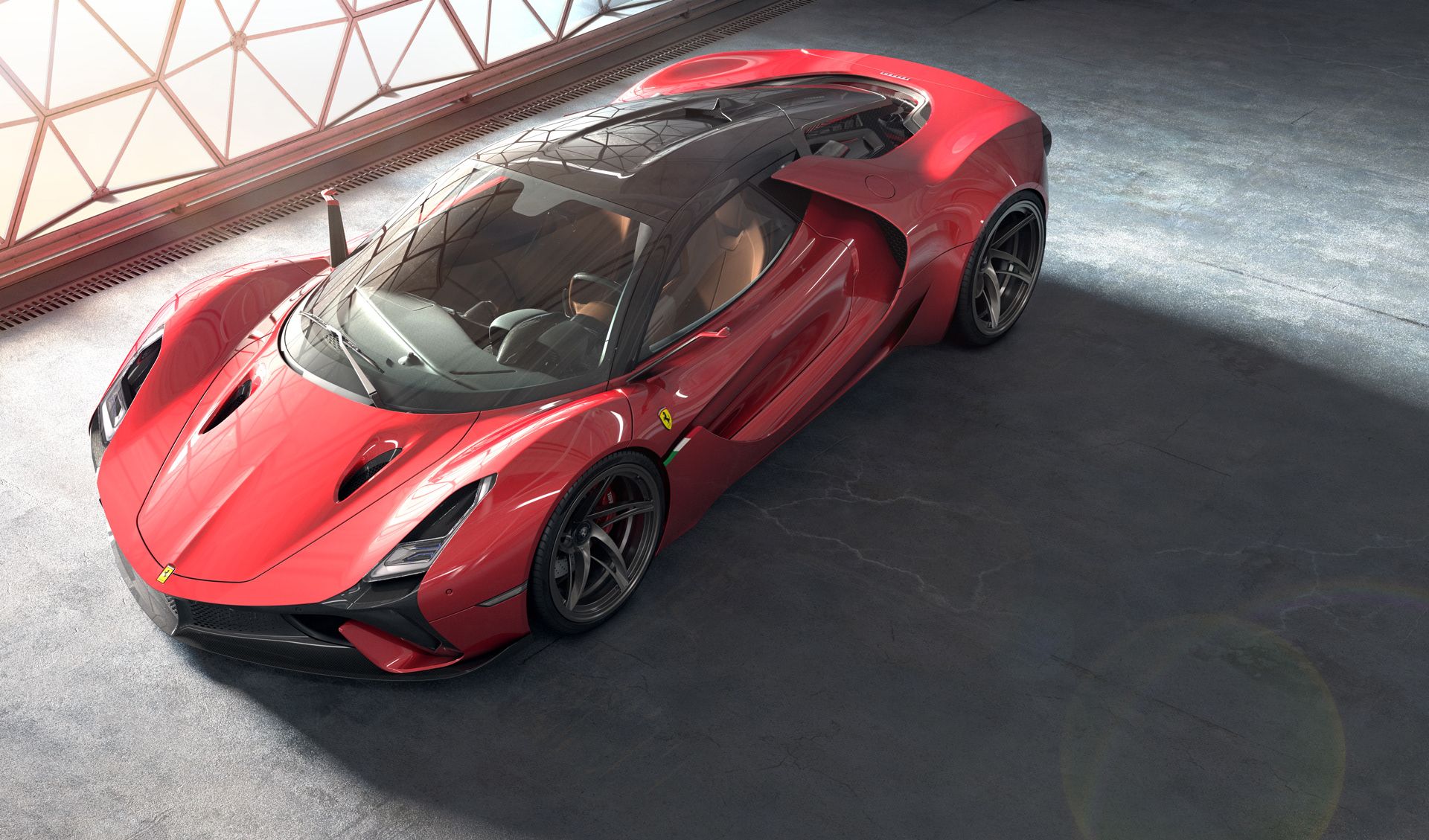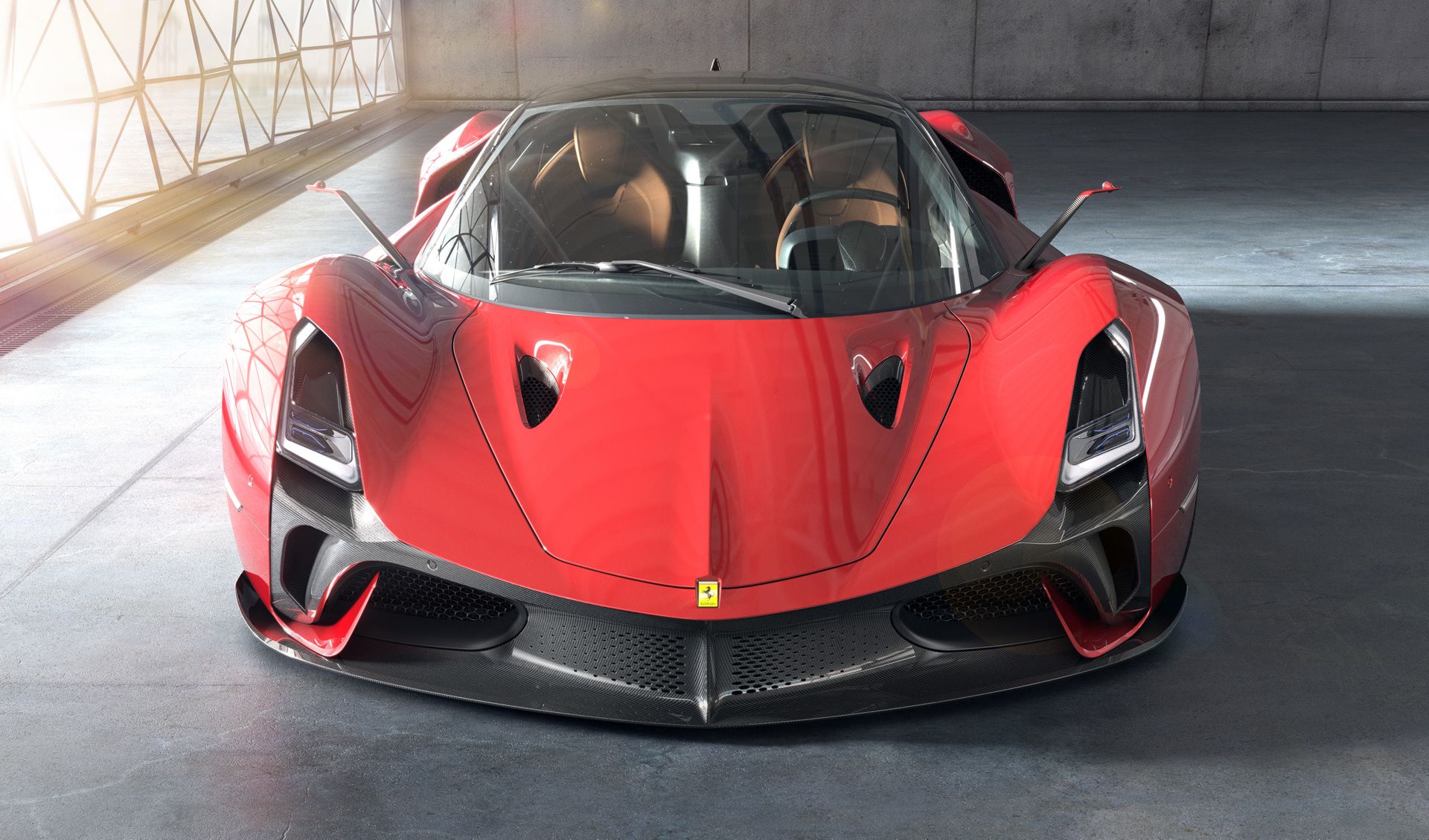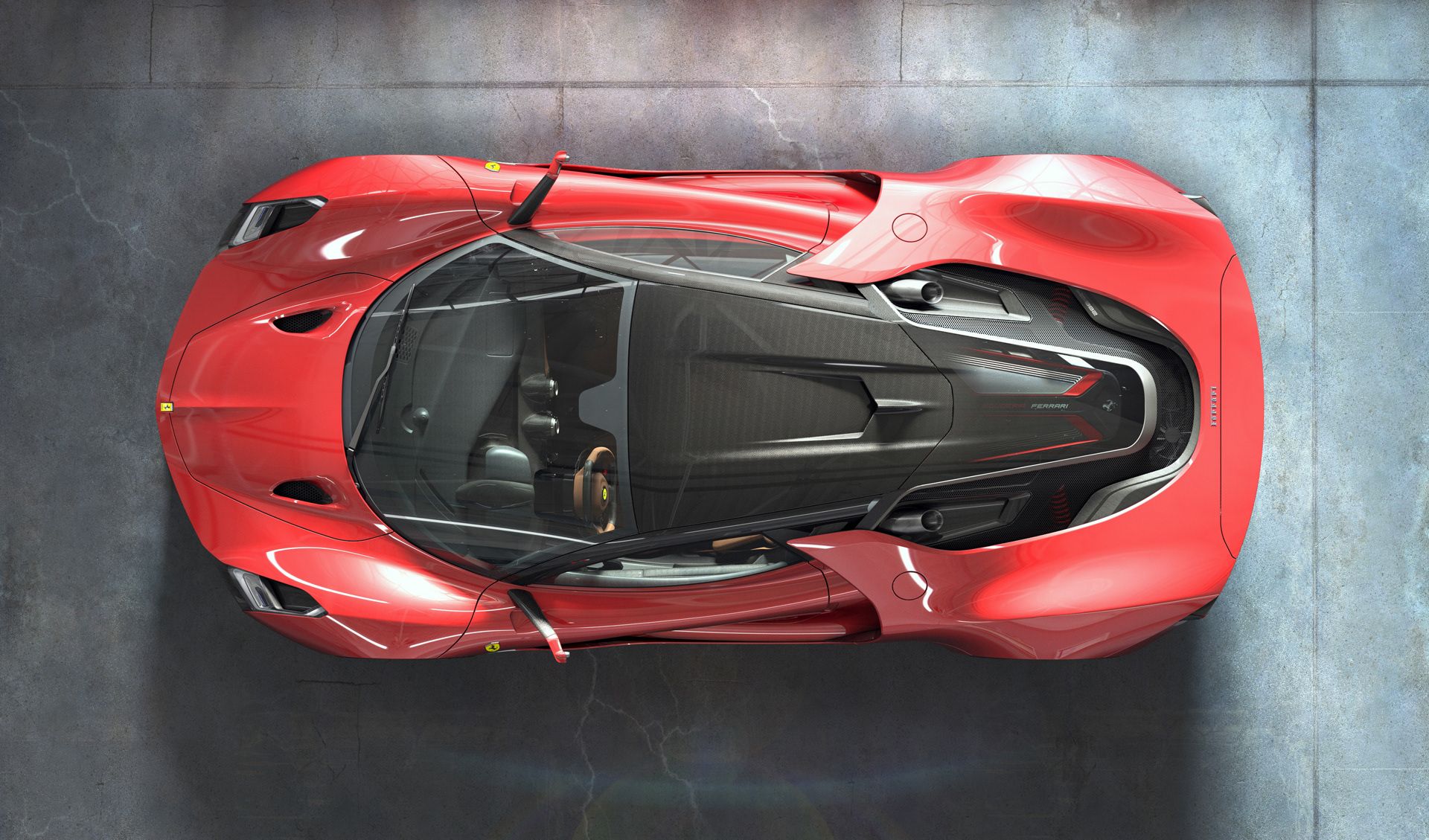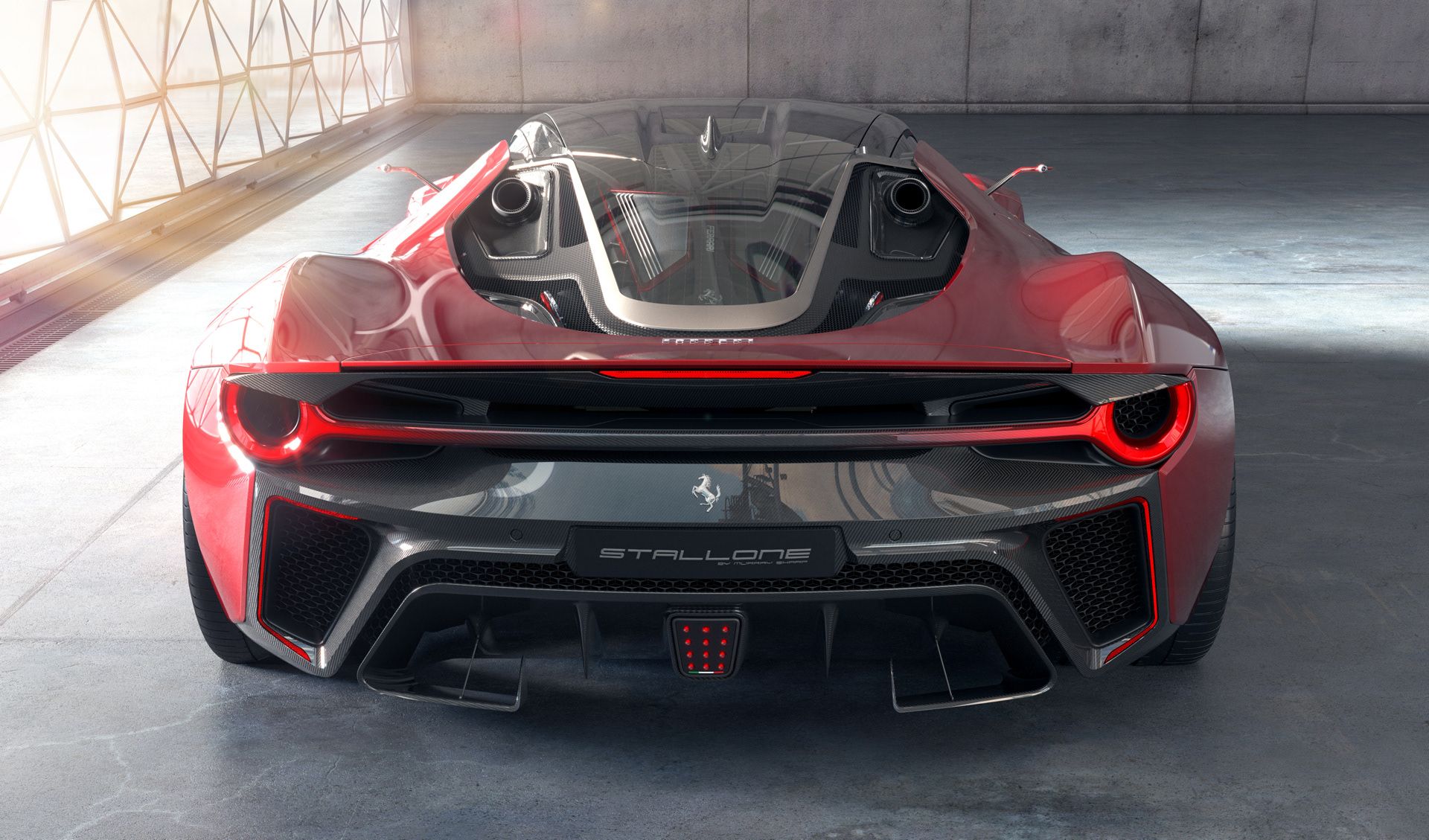With Geneva knocking at the door, we can’t help but look back at the 2013 edition of the word’s largest motor show, which say Ferrari introduced the game-changing LaFerrari. The thing is, though, the LaFerrari is a bit long in the tooth right now and in dire need of a worthy successor.
No, don’t jump for joy just yet, Ferrari hasn’t laid out any plans of launching such a hypercar, but there’s one designer that let his creative juices to flow freely and the result is what he calls the Ferrari Stallone.
Wait, what? Did you say Stallone?
No, this is not a Sylvester Stallone-endorsed edition either. Stallone is actually the Italian word for stallion, a proper name, come to think of it, for one of the Prancing Horse’s models, albeit one that only lives in the digital world (for now).
The Ferrari Stallone is the work of South Africa-based designer Murray Sharp. His portfolio encompasses a couple of other cool car design projects, but we’ll focus on the Ferrari Stallone for now. Unlike other designers, Murray took the time to thoroughly explain why he concocted the design study and most importantly, how he did it and what pointers he had in mind. For example, he wanted to melt together the sculpted beauty of a 250 GTO with the race rawness of the mighty F40.
|
|
ids=888912,888913 |
no_overlay=false |
before_label=Ferrari Stalone |
after_label=Ferrari F40> |
So he started off with the proportions and stance of the Ferrari F40, but focused more on making the concept lower and wider. It also has an exposed engine bay flanked by top-mounted exhausts, a floating headlight design that works like an air-channeling fin, aggressive flying buttresses, and cameras instead of side mirrors. Of course, the classic Ferrari rounded taillights were, too, included in the design.
We’re even spoiled with dimensions for this dreamworld hypercar, which is supposed to be 4,530 mm long, 2,150 mm wide, and 790 mm tall, with a wheelbase of 2,650 mm. For the sake of the argument, the F40 flaunted a wheelbase of 2,450 mm and a total length of 4,358 mm. It also packed a vicious V-8 good for 478 horsepower and 577 Newton-meters of torque (425 pound-feet of twist).
Murray doesn’t say what sort of engine he envisioned for the Ferrari Stallone, but a V-12 powerplant heavily aided by electrification would surely do it a lot of justice from the perspective of a LaFerrari successor that could easily pack in the region of 1,500 horsepower.
There’s one big problem, though, with this whole design study. In fact, it’s not the concept, but us. We can’t think of a way to get Ferrari’s attention before falling on our knees to beg for a production model that looks like Murray’s masterpiece.




